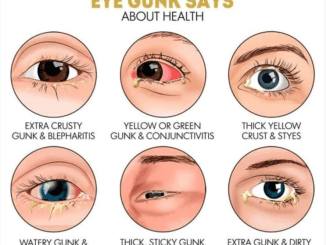Every year, hundreds of thousands of people survive a heart attack—only to face the terrifying possibility of heart failure shortly afterward. Now, thanks to an exciting new advancement from scientists at Northwestern University and the University of California San Diego, that could be about to change. Researchers have developed a groundbreaking systemically injectable therapy that may protect the heart from lasting damage and reduce the likelihood of post-heart attack heart failure.
What Makes This Therapy So Different?

Let’s be honest: we’ve heard the promises of miracle cures before. But this one? It’s rooted in serious science. At the core of this therapy are protein-like polymers (PLPs), which behave like synthetic proteins engineered to disrupt a cellular interaction that limits the body’s natural healing process. These custom-designed polymers bind to and block a regulatory protein called Keap1, which usually suppresses the action of a beneficial healing protein named Nrf2.
By locking down Keap1, PLPs free Nrf2 to enter heart cells and activate protective, anti-inflammatory genes. This means your heart can start healing itself more effectively—exactly when it needs to the most.
Targeting a Major Unmet Need in Medicine
Here’s the hard truth: heart disease is still the number one killer worldwide. And the journey from a heart attack to heart failure is more common than you think. According to the CDC, more than 6.7 million American adults are living with heart failure. What’s worse? Over half of them will die within five years of their diagnosis.
The most common trigger for this downward spiral is a heart attack. Damage from a lack of oxygen and inflammation can weaken the heart muscle permanently, leaving it unable to pump blood efficiently. Current treatments focus mostly on restoring blood flow, but they fall short when it comes to repairing the damage and preventing long-term deterioration.
Video : 5 Signs of Weak Heart #heartdisease
How the PLP Therapy Works
So how exactly does this PLP therapy do what current treatments can’t?
It’s all about unlocking the healing potential of the body’s own proteins.
Nrf2 is a powerful protector against cellular stress, but Keap1 acts like a gatekeeper, holding it back. The PLPs, developed with nanoscale precision, are designed with multiple “arms” that mimic the Nrf2 protein. These arms bind strongly to Keap1, distracting it and allowing the real Nrf2 to slip through and do its job.
Once free, Nrf2 moves into the heart cell’s nucleus and switches on protective genes—fighting inflammation, reducing cell death, and supporting the repair of damaged tissue.
Proof It Works: Animal Testing Results
The researchers didn’t stop at theory—they put their innovation to the test.
In experiments with heart muscle cells, the PLPs successfully protected against oxidative stress even at low concentrations. But the real magic happened in animal trials. After just one intravenous injection of the PLP therapy in rats that had experienced a heart attack, scientists observed:
- Lower inflammation
- Reduced heart cell death
- Improved heart function
- New blood vessel growth
And perhaps the most astonishing part? The benefits lasted up to five weeks after a single low-dose injection.

A Game-Changer for ‘Undruggable’ Targets
What sets this platform apart isn’t just what it does for heart health. It’s what it could do across a range of difficult-to-treat diseases. Traditional drugs often can’t reach or bind to large, complicated targets inside cells. PLPs, with their antibody-like precision and cell-penetrating abilities, open the door to treating diseases that were previously considered “undruggable.”
Grove Biopharma, the startup commercializing this technology, has already raised $30 million in Series A funding to explore PLP applications beyond cardiology. Their next frontier? Targeting cancer and neurodegenerative diseases.
Why Timing Is Everything
One of the standout features of this therapy is how soon it can be deployed after a heart attack. The key to preventing heart failure lies in stopping the damage before it becomes irreversible. According to Dr. Karen Christman, one of the study’s co-leads, the ultimate goal is to intervene immediately after a heart attack—before the scarring and inflammation get out of control.
In other words, this isn’t about treating heart failure. It’s about preventing it altogether.
Video : 7 best foods for a healthy heart- Revive hospitals
The Road Ahead: From Rats to Humans
Of course, there’s a lot that still needs to happen before this therapy shows up in your local ER. Human clinical trials are the next big hurdle. But the foundation has been laid. With promising preclinical results, solid funding, and a passionate team behind it, PLPs are positioned to become a major player in the future of cardiovascular medicine.
Final Thoughts
This new injectable therapy might sound like something out of a sci-fi novel, but it’s real, it’s happening, and it’s potentially life-saving. By freeing protective proteins inside heart cells, PLPs could halt the destructive cascade that often follows a heart attack—and give millions of people a real shot at recovery.
If you’ve ever worried about heart failure or have loved ones who are at risk, this breakthrough should be on your radar. It’s a glimpse into a future where science doesn’t just treat disease—it helps the body heal itself.
Stay tuned, because the heart of medicine may just be getting a reboot.


